Royal Marines have undergone a rigorous training regimen, aimed at perfecting the skills required to safeguard the UK’s nuclear weapons and the Vanguard-class submarines that transport them.
Marines of 43 Commando Fleet Protection Group are on duty 24/7 365 days a year, tasked with guarding the UK’s ultimate weapon and the Vanguard-class submarines that carry it.
Situated at Faslane in Scotland, these specialised commandos are specifically trained in various close-quarters combat techniques. Each year, an exercise known as “Tartan Eagle” is held, alternating between the UK and US.
This training serves to keep the marines from both nations, engaged in this specialist task, at the pinnacle of readiness for their roles.
The most recent exercise, which took place over a two-week period in Chesapeake, Virginia, allowed marines from both sides to exchange equipment, expertise, methods, and protocols.
This rigorous training culminated in an intense finale: the marines executed a mission against a group attempting to jeopardise vital national structures.
Marine Beckett recounted in a press release, “We cordoned off the area so that our Recapture Tactics Team could clear through the building, dealing with occupants ranging from armed individuals to civilians working in the area.”


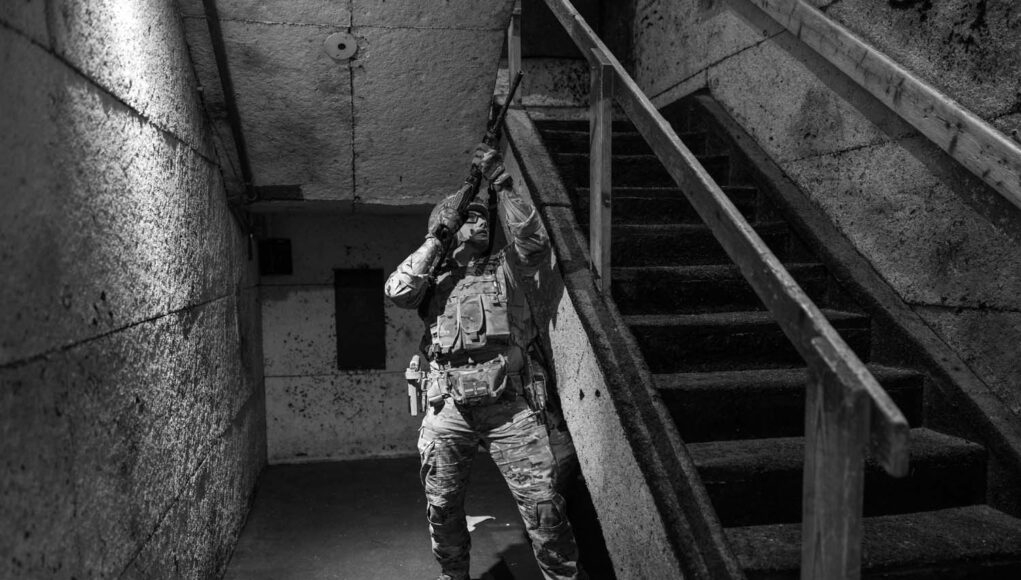
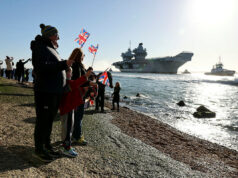


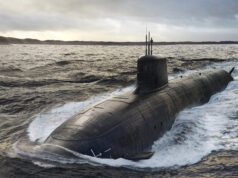
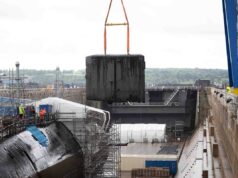
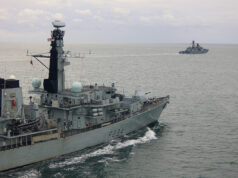
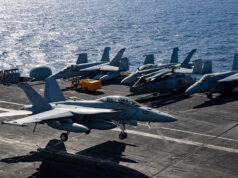

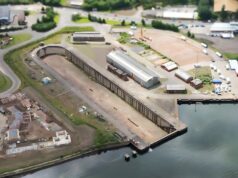
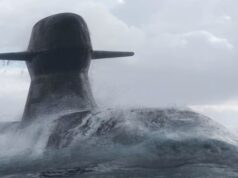

Fleet Protection Group is a pretty thankless task, but vitally important. Marines spend days in the compound at the Trident Storage Area over the loch at Coulport. Cut off from the rest of the camp and some miles away from Faslane. It’s a very interesting place though. With high watch towers, triple barb wire fencing, CCTV everywhere and scientist types in long white open coats. It’s something straight from a James Bond movie set. Add in a jet black Vanguard boat set against moody Scottish hills, and you get the picture. A fascinating place. 👍
Hmmm…presumably an ignorant question, but why hasn’t the RN built its own Trident D2 missile maintenance and storage facility at Faslane (essentially a replica of facilities at King’s Bay, GA)? Realize that there would be significant initial infrastructure investment, but presumably that cost would be amortized over some period by reduction in SSBN maintenance costs and increased lifespan of reactors, from avoidance of repetitive voyages to King’s Bay. Obviously, there is an overlooked rationale, but unable to pinpoint it …🤔
I can only presume it’s because Trident D5 is a US designed and manufactured product. And agreements have been made between the two nation’s. I understand it is a shared missile stock, with UK designed warheads are assembled at AWE Burghfield and transported by road to RNAD Coulport.
Yes, you’re undoubtedly correct. Every facet is probably dictated by treaty obligations.
…D5…🙄
I guess it is because the Nassau agreement included the US role to maintain and supply missile bodies/motors to the RN. Is that so the US can have some control? or because it is more efficient/cheaper?
Indeed. Actually very close to Faslane as the crow flies, but not by vehicle.
Nobody is going in there. I believe some CND types have got into Faslane though, but not sure if they got into the inner sanctum where the SWB and other stuff is where the Marines are.
No chance. Think it was a about a 20min drive from Faslane. The Trident Storage facility is a good drive through RNAD Coulport, with a number of gates to pass through before you get to the main entrance of the Trident Storage facility. You need special clearance to enter, handover and swap ID cards ect, and get checked in. You drive past the old Polaris Storage facility on the way up. The Marines often use that area as a training ground. Lots of MOD police around. Once in the Storage area, the Marines live in a hardened bunker with weapons on racks ready to go and vehicles ready to go. I had Christmas lunch in that bunker once 😄 And the 2nd detachment of Marines are down at the covered docking hangar (forget its proper name) where the boats are loaded. A 3rd detachment of Marines are also at Faslane very close to the Trident pen. Then you have the main 43 Commando HQ building about halfway along the camp.
The EHJ? Explosives Handling Jetty.
Covered so spy satellites cannot see how many missiles are loaded.
I’ve studied Coulport at length, indeed a big place. The old Polaris area is easy to spot, along with the Trident storage bunkers and certain other key buildings.
Morning mate. Yes.The EHJ, that’s the one. Bit spooky on a wet night down at the jetty.
The expression is called “going behind the wire”, indicating the highest state of readiness and the inability to leave camp until their duty is over.
Also fascinating that someone somewhere has objected to my replies and our joint discussion of some the facilities at both locations.
Curious, as any numpty can go onto the internet and look at the webpages that openly show such details themselves and everything we discussed is open source public knowledge.
Royal marines are getting 1600 knights stoner KS1s to be followed by the Rangers and potentially options for upto 10,000 more of these weapons.
The knights stoner is a useful weapon. Ambidextrous and accurate.
I think it’s the right option going over to an M4 derivative as the platform has been continuously updated, spare parts are plentiful and the standard NATO 5.56 rounds are in huge supply.
I guess once stocks are built up and industrial military base is ready lots of NATO countries will go across to the new US army 6.5mm round and rifle systems. No need to try to be an early adopter for the new round.
I think it’s an odd decision given that UKSF operate with the HK 416 and 417 (unless they’re changing too.) The gas piston assembly has proven to be way more reliable than the AR blowback system. I’m sure it’s a logical decision based on parameters that I don’t know about, but then – they also decided to retire the LMG so …
According to reports the KS1 beat a number of weapons using the AR platform including the HK416. Being one who has used a number of rifles including AR blowback platforms and the HK416 gas-piston. I am still biased in favour of the 416. When in the cack, it never let me down, even when using crappy Romanian ammo. Whereas the Canadians I was with who had Diemarcos C7s had no end of issues with the crappy ammo.
I know they have conducted this trial over 2 years. One of my questions would be, have they tried the KS1 with crappy ammo as you can’t always guarantee where it comes from?
Morning Mr. Bell. A broader question-does the UK still manufacture any side arms, rifles, machine guns etc. or are they in the main now manufactured overseas? I think of famous old British names-Stirling, Webley, BSA -all gone?
Nowadays it would seem that most of these are now supplied by Germanic firms-Glock,, Sig Sauer, Heckler and American-Colt, Remington, Ruger.
Morning geoff.
Not my area, but I think Heckler was bought by BAE?! Or maybe that is now outdated info.
Morning Daniele. I hope you are well. Thanks for that! The worlds manufacturing landscape has changed dramatically and we know the reasons why, but I would have hoped the UK would have retained some internal capacity to manufacture firearms for security and strategic reasons. You guys have a late Summer.32 degrees!! Roughly the same as Durban this weekend
Cheers my friend
Manroy was bought by FN.
Mass production of firearms I believe no longer continues in this Country. BAe Systems sold off Heckler and Koch in 2002. I am pretty certain there is still an element of the Royal Ordinance division within BAe, who still produce spare parts for the L85 and GPMG. I don’t know if they have the capacity to mass manufacture a new weapon system let alone design one.
However there are still a few specialist manufacturers, with Accuracy International being perhaps the most widely known. BSA still manufacture rifles, but they are all air-powered rather than chemically powered. They are also still quite a few shotgun manufacturers.
Hi Davey. Many thanks for the information. A scenario where the UK would suddenly need lots of firearms is unlikely but still there should be a lingering concern that there is no domestic supplier available. The UK needs to have a financial stake in key areas such as these. The other one that comes to mind is Airbus for example. What if they decided to pull out of the UK? With no shareholding, we are entirely at risk of such decisions. We have many friends but lots of Brexit-angry enemies in Europe, especially in France!
I wonder if this is an unappealing billet (I think that is the RN/RM term for a posting).